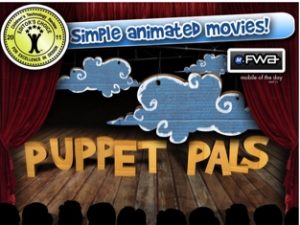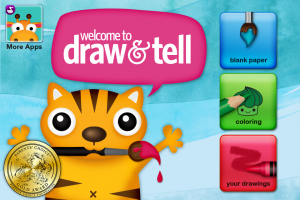This week marks the beginning of a new course in my Master’s journey, EDCI 572, Development and Implementation of Curriculum. The task at hand is to reflect on my own perspectives and experiences of digital storytelling. My own personal experience with digital storytelling has mostly been as a receiver not as a creator. Before starting this Master’s program, the closest I got to creating would likely be word processing and email. As I attempted to video record myself for this blog post, I discovered how much anxiety recording my face and my voice gives me. So I fell back into a text blog. In type, I have nothing I feel compelled to hide.
At the present, as a Kindergarten teacher, I use FreshGrade to document student learning, usually through my iPad or iPhone. We use photos with voice over or video to capture their thoughts, not mine. In most cases, I am the one behind the camera. Most are happy to have their photo taken but when it comes to video, many need encouragement and prompts or questions to talk about. They need reminders to speak loudly enough or to face the direction of the recording device so their voices are not lost. Quality control is minimal. If I can get one take that has the elements we need covered in it, it’s time to move on. They are usually happy with anything they do at this age and they really don’t want to spend time doing retakes because playtime awaits! To be honest, I don’t have a lot of time either. There’s only so much attention I can give to it when there are up to 19 other little people running around.
I consider my students to be on the ground floor in using digital technology. We don’t know exactly what the kids have learned to do at home so far. Maybe they’ve never picked up a digital tool before, maybe they video call Grandma every week, maybe they make regular contributions to YouTube, who knows? Maybe they have some bad habits. Maybe they need to learn about privacy. Maybe their parents are so concerned about privacy, they’re not allowed on the internet at all. Some of these kids aren’t even allowed to watch tv.
While we do have access to desktop computers, I choose not to use them because iPads are so much more accessible for little learners. Also, it takes 4 and 5 year olds almost the entire block of computer lab time to get logged in because they are still struggling with letters and numbers. When they each have an iPad in hand, there are no passwords and they are generally all engaged with the tool, which is great! I have learned that is important to give these young learners lots of time to explore and play with an app before attempting anything with a specific goal in mind. Even then, there is a strong possibility that they will need frequent reminders about what those goals are. I am often too busy troubleshooting to stop and view their video right away, so I quickly Airdrop everything they give me to my device because the school iPads must be erased after use. I don’t know until later if any goals were actually met.
 Other than the built in photo and video capabilities, we use easy, fun apps such as Draw and Tell and ChatterPix Kids. These apps allow students to express themselves through pictures and have a microphone to enable voice overs so they can talk about their drawings and photos. I am just starting to explore the PuppetPals HD app that allows groups of children to collaborate on a puppet show using preloaded graphics and backgrounds. Through multitouch capabilities, the app allows students to each operate their own puppet(s) simultaneously while their voices are recorded.
Other than the built in photo and video capabilities, we use easy, fun apps such as Draw and Tell and ChatterPix Kids. These apps allow students to express themselves through pictures and have a microphone to enable voice overs so they can talk about their drawings and photos. I am just starting to explore the PuppetPals HD app that allows groups of children to collaborate on a puppet show using preloaded graphics and backgrounds. Through multitouch capabilities, the app allows students to each operate their own puppet(s) simultaneously while their voices are recorded.
In one of this week’s readings, the Learning Design Tools of Rocky View School, the presentation called How to Make Pro Videos on a Mobile Device highlights steadying the device, using a microphone, using natural light from a window, framing the subject at eye level, editing the video using editing software. As part of various lessons, I have talked about technical points like getting permission to take someone’s photo, finding a quiet place to record voice overs, making sure they get in close so they do not record anyone extra, noticing when it is too dark, and holding the device steady. I have not attempted anything official with photo editing yet but I think they probably would find cropping, resizing, and experimenting with drawing on photos a lot of fun. I definitely see video editing as beyond their reach, next level.
Up until the end of second term, most of what they have done is draw a single picture or create a thing and talk about it. In the Spring, we start talking about more detailed storytelling. They draw three pictures in their story, a beginning, middle and end and then I record the video as they share their story with the class. I have never really thought about it as such but this could be the ground floor in storyboarding.
The recurring story with most teachers I’ve met is, “I don’t have the time.” I think the problem with teaching about technology and digital literacy is that teachers think it is their job to teach the whole of everything and maybe they don’t know how to do everything so they quit before they start. We all need reminders that we need to leave something for next year. And then next year’s teacher needs to know what they learned last year so they aren’t doubling up too much this year. Wouldn’t it be useful if there was a year by year framework for scaffolding specific digital skills as well as digital literacies? Maybe there’s a project in that.




It’s awesome that you get to start with kids at square one with digital literacy. As they get older and get to high school most students have a base knowledge of computers and internet but some are completely disconnected and it can be difficult to remember that they don’t all have that knowledge. I often assume students know what I am talking about when referring to programs and that occasionally bites me in the butt later. It can be frustrating for some really advanced students to go over the basics but I find it never hurts.
Honestly, students are more often than not teaching me knew things.